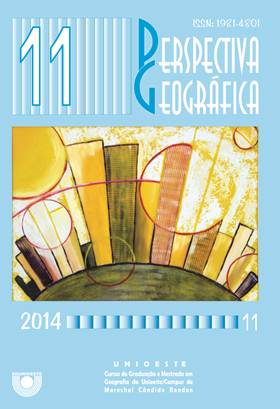THE ENVIRONMENTAL ZONING POLITICS OF OURINHOS COUNTY – SAO PAULO STATE: DIALOGUES AND REFLECTIONS ABOUT PAST, PRESENTE AND FUTURE
Keywords:
Zoneamento Ambiental, Políticas de Ordenamento Territorial, Plano Diretor MunicipalAbstract
In an etymological approach the word zoning means order homogeneous areas for potentialities and vulnerabilities analysis of a certain territory. Associated to urban management, its aim have other connotations. It becomes an important legal instrument for territorial ordination directly contributing with the stages of urban planning. First for enable the county macro zoning by the preparation of graphic scenarios (thematic maps) where it is possible obtaining the urban zone spatialization, the urban, rural and special areas (environmental protection) expansion tendencies. Second for enabling, the land uses rules for each macro zones. However, its practice not always have thought as a functionalist way. Its concept as well as its applicability may vary according to historicity. In this purpose, this paper has as its aim showing a comparative study of environmental zoning proposals of Ourinhos County which, in since its creation. They were: a) The Economic-Humanistic Zoning Proposal (1954/55), b) The Traditional and Functionalist Proposal (1982) of Development plan; and c) The Environmental and Participative Zoning Proposal (2006). Therefore, this study confronts the methodologies through a comparative study of the three conceptions in Territorial Ordination, analyzing what it was, what it is and what it could be of the urban landscape spatial setting, basing in the investigative method of landscape systemic approach. Opposing, combining and crossing information, using Geoprocessing and GIS techniques, of past (what it was), present (what it is) and future (what it could be) urban landscape, looking for infer about which factors generated the actual setting of urban landscape. These are the main discussions intended through this paper
Downloads
Published
How to Cite
Issue
Section
License
Aviso de Direito Autoral Creative Commons
Política para Periódicos de Acesso Livre
Autores que publicam nesta revista concordam com os seguintes termos:
1. Autores mantém os direitos autorais e concedem à revista o direito de primeira publicação, com o trabalho simultaneamente licenciado sob a Licença Creative Commons Attribution que permite o compartilhamento do trabalho com reconhecimento da autoria e publicação inicial nesta revista.2. Autores têm autorização para assumir contratos adicionais separadamente, para distribuição não-exclusiva da versão do trabalho publicada nesta revista (ex.: publicar em repositório institucional ou como capítulo de livro), com reconhecimento de autoria e publicação inicial nesta revista.
3. Autores têm permissão e são estimulados a publicar e distribuir seu trabalho online (ex.: em repositórios institucionais ou na sua página pessoal) a qualquer ponto antes ou durante o processo editorial, já que isso pode gerar alterações produtivas, bem como aumentar o impacto e a citação do trabalho publicado (Veja O Efeito do Acesso Livre).
Licença Creative Commons
Esta obra está licenciada com uma Licença Creative Commons Atribuição-NãoComercial-CompartilhaIgual 4.0 Internacional, o que permite compartilhar, copiar, distribuir, exibir, reproduzir, a totalidade ou partes desde que não tenha objetivo comercial e sejam citados os autores e a fonte.


